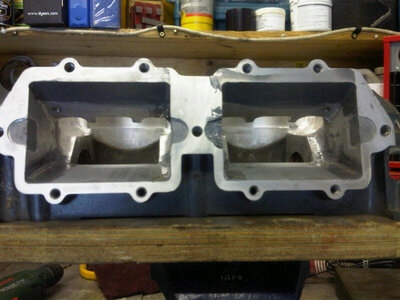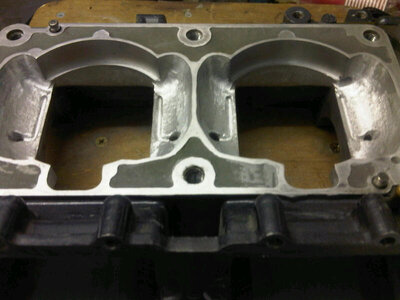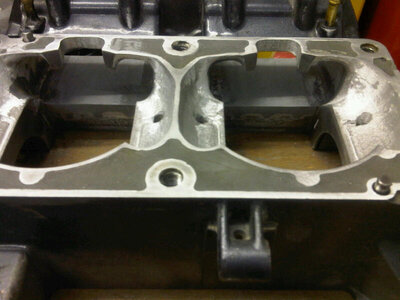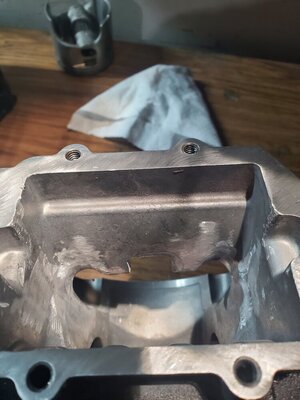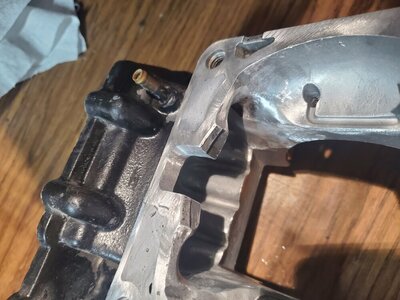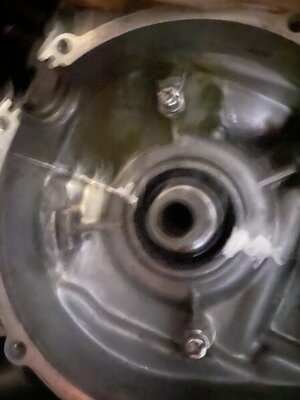@Jr. I totally understand not wanting to share hard earned information, but I am wondering have you done some sort of testing that revealed a situation where case porting was WORSE than stock? Like can it be done so wrong that it is a detriment? (hopefully that can be answered without giving up too much of the secret sauce)
Or
@MTRHEAD
I could see maybe due to an increase in case volume, but that change in case volume seems like it would be pretty similar for "good" case porting and "shoddy" case porting, and the reputable builders seem to universally do some sort of porting in the cases to open them up.
I'm guessing a whole lot of people (myself included) have grabbed the die grinder and hogged'er out completely based on looking at what other people are doing and very few people have done any kind of actual testing. Lots of people repeating what they saw on the internet but not actually knowing anything other than that's what everybody says on the internet.
It's really hard for me to imagine that this is a thing where subtle differences can make big change in performance, especially after giving Kawasaki cases a good look (they are way more restricted from reeds to crankcase, or at least that's how they look to me). I question if the case porting even makes a difference on a stockish Yamaha, but I ported my cases so I'm another one blindly following the crowd.
Ok, Ill bite, but understand, Im going to give you food for thought, without my technical data. As I would use to design a clients project.
First off, from the very beginning of my pwc career, I was not only a mechanic / tuner, but a rider in my own right.
I continue to ride currently, and use my personal equipment as a test bed. I believe im one of very few tuners that also ride. So having first hand knowledge of what happens every time I make changes is key. There are a lot of elements at play.
For basics, an engine is an air pump. You need to understand “flow” What goes in, must go out. How the internal pressures ( positive and negative) “flow” thur the motor all plays a part. Yes, you can go too far, and I have sent many motors to the scrap heap because I have gone too far. The learning curve can be steep and costly. While its very true, two stroke principal applies to all mods. PWC powerplants are uniquely different. They need to perform in a vacuum type motor bay, which can be very hot and humid. They must operate from just off idle, to full rpm load, so they need to have a broad spectrum powerband. , All this said, we now go back to “Flow”. Flow Characteristics change according to displacement, desired powerband, peak rpm, required load. ( plus numerous other factors) so your flowrates and volumes thru the motor need to be altered. Here is something to give you the idea.
Case porting a 760 BB motor that is intended to run duel 38’s. Do you grind Big transfer tunnels or small?
If you start with smaller to match cfm of the 38 carb, incoming charge will stay at a higher pressure, due to matched volume. Say you grind out large tunnels? What happens to your pressure? See where this is going? Its easy to go too far. This applies to big stroker motors as well, just at a different level.
Thank you for respecting my knowledge and background, and not asking me to exploit it here. Im on my 37th year building performance watercraft motors. I have certainly learned a thing or two along the way. Most all credible builders keep their secrets closely guarded. Those secrets have come from many long days and countless failures.
The very best advise I could give anyone of you looking learn what makes these motor tick, buy a bunch of used parts and experiment. Expect to see more failures than success. You will learn far better than watching a youtube video, of some guy selling something for nothing?
Ski ya, Paul







